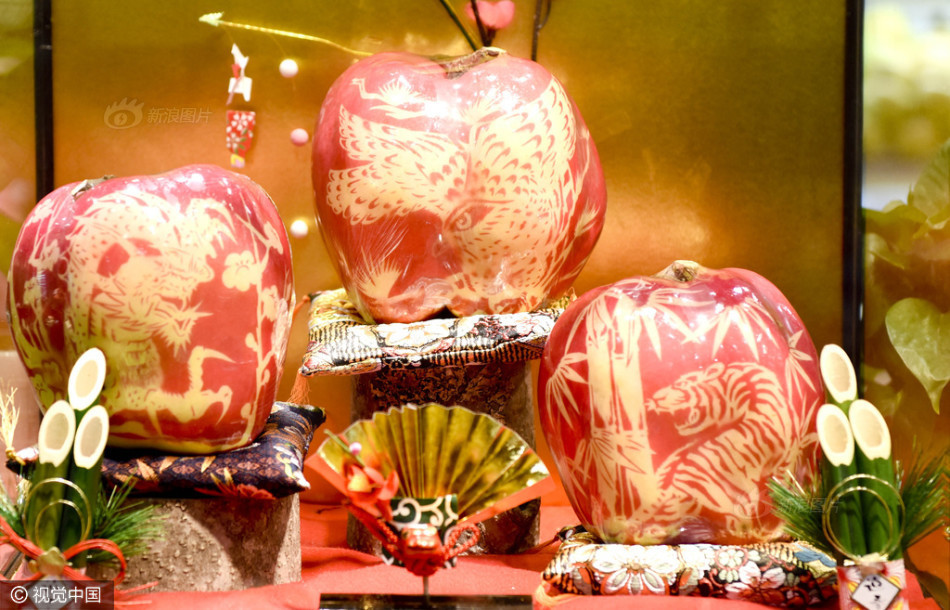Christmas around the world
Like many communities, Serra has special Christmas traditions. From Adopt-a-Family to the Christmas concert to the decorating of the lovely tree in the main lobby, we do it up in festive style while collectively honoring our faith and the beauty of this important celebratory season.
Of course, we are not alone in our festive celebrations and stories of the Christmas season. Long before Santa was coming down chimneys across the world, there was St. Nick. This Greek Christian saint’s legend began in his service as Bishop of Myra in the 4th century, but today he is widely celebrated in Greece and beyond. The Saint Nicholas Center sponsored by the Virginia Theological Seminary tells us, “As Bishop of Myra, Nicholas lived the qualities that caused his fame and popularity to spread throughout the Christian world. His vigorous actions on behalf of his people and in defense of the Christian faith reveal a man who lived his convictions. Nicholas was not timid—he did what was necessary and was not easily intimidated by others’ power and position. His concern for the welfare of his flock and his stand for orthodox belief earned him respect as a model for bishops and a defender of the faith.” Saint Nicholas was also known for his gift giving, just like Santa! Tastemade’s article 6 Christmas Stories from around the globe that Mommy and Daddy didn’t tell you reveals that Saint Nicholas’s “…penchant for secret gift-giving (such as placing coins in the shoes of those that were left out) began when his wealthy parents died, and he obeyed Jesus’s instructions to ‘sell everything you own and give it to the poor.’ He gave away his entire inheritance and embodied that credo as a life motto.”
Caga Tió
In the Catalonia region of Spain it’s not Santa or St. Nicholas who arrives bearing gifts at Christmas time. Instead, it is a Christmas log, or, as they refer to it, the Poo log. (Literally, “Uncle Poop”.) Yes, you did not misread. Lindsay Patterson, describing a trip to Spain in an article for NPR, writes, “The first time I heard about Caga Tió, or Tió de Nadal, my family was getting settled into our life abroad in Barcelona this fall. A new friend’s teenage daughter was telling us about the Catalan traditions she celebrates in school. ‘During Christmas, there’s a log that you feed scraps of food, and then he poops presents when you hit him with a stick and sing a song’…I had so many questions. Mostly, why was a log being urged to poop something called turróns to eat? When I asked Catalan friends, there were no clear answers. Apparently, Caga Tió is like Santa. You take the presents, you don’t ask questions.” For those not from Catalonia, that seems like an unusual way to celebrate! We wonder how the U.S. capitalist system would commercialize Uncle Poop? … Probably best that this tradition remains in Spain!
The Caga Tió song
Arcadia University shares the traditional song of Caga Tió in two versions (and in English translation):
Poop, log,
poop nougats (turrón),
hazelnuts and mató cheese,
if you don’t poop well,
I’ll hit you with a stick,
poop, log!
Another version is:
Log of Christmas,
poop nougats,
pee white wine,
don’t poop herrings,
they are too salty,
poop nougats (turrón)
they are much better!
Christmas in China, Korea and Japan


In China, where only 1% of the population is Christian, the traditional celebrations we enjoy in America are not the norm. What is the norm? Shen Lee Ng, writing for Zafigo.com, shares unique traditions among Asian countries during the Christmas season. “Christmas in Asia is full of quirks and originality that make the festive season a unique experience…Christmas Eve in Mandarin is ping an ye, which translates to the night of safety and peace. The word apple is ping guo which sounds very similar. Thus, apples somehow became a popular gift for friends, colleagues, and loved ones during the season. Not just any apples too – the apples are typically engraved with well wishes and wrapped in patterned cellophane or packaged in boxes.” And in South Korea? “If you happen to be in South Korea looking around for Santa Claus, you might have to change your perception of what he looks like. Lookout instead for a figure dressed in green or blue! Meet Santa Haraboji! Garbed in traditional robes and a tall black traditional gat hat in lieu of the soft red santa ones you’d expect, he’s a unique take on Korea’s version of Santa.” If you find yourself in Japan at Christmas, you won’t be feasting on turkey, ham or roast beef. The most popular meal on Christmas day is Kentucky Fried Chicken. “…the Japanese KFC Christmas set meal is so widely demanded that people have to pre-order it!”
South America

In South American countries, “Decoration is the key, whether you’re rich or poor. Unlike the Christmas trees from Hollywood films, families use plastic ones that are supposed to be replaced once every seven years (in Argentina it’s bad luck if you don’t!)” The Matador news staff explains. For most of the South American continent, Christmas marks the beginning of the calendar season of summer (think light and warmth), so their experience and traditions can be quite different from those of the northern hemisphere. In the U.S., we don’t tend to associate Christmas with fireworks and a day around the swimming pool, but that’s how it plays out for many families throughout South America. In Peru, Bolivia, Venezuela and Colombia, el Niño Jesús brings gifts for children on Christmas Eve, but in Argentina, los Tres Reyes Magos (the biblical magi) deliver gifts on Jan. 6th, the Feast of the Epiphany, rather than on Dec. 25. And don’t get us started on traditional Latin American foods of Christmas because the list is long and as varied as each country of South America!
Africa
In African nations, Christmas traditions are widely celebrated. One.org explains, “Christianity has been on the continent since the middle of the first century, and approximately 350 million Africans are Christian.” The massive continent is roughly 2/3 northern hemisphere and 1/3 southern hemisphere, so traditions are varied as one would expect. In South Africa, a very popular Christmas dish is the caterpillar of the emperor moth, deep fried! Nigerian traditions include church attendance, a visit from Father Christmas, and the traditional Christmas rice dish. In Tanzania, the fattening and slaughtering of a cow or goat for a grand Christmas feast with family is common. Christmas traditions introduced by European Christian missionaries hold sway in many African nations, but the varieties of foods from country to country are a hallmark of African celebrations, if one wants to categorize them as such. For a look at the unique Christmas traditions in a handful of African countries, have a look at Jenna Carters’ article How countries in Africa celebrate Christmas.
Note: When searching the Internet for the holiday traditions of various countries, one will often find them labeled “strange” or “weird,” revealing a Euro-American-centrism throughout much of this content. No doubt many people throughout the world would look upon Black Friday shopping mania in the U.S., or the incessant playing of the same 30-50 song recordings from Thanksgiving to Christmas as odd or, (gasp!), weird! Let’s be careful about how we describe customs and traditions that are not our own.
Christmas in Times of War

A. C. Michael – The Guardian [2] / [3] Originally published in The Illustrated London News, January 9, 1915. Public domain in the United States.
No matter where people live in the world, they share the same wish at Christmas and Epiphany, which is a message of Peace on Earth. During World War I, one of the most brutal of wars in modern times, Christmas paused the war for a brief moment. Smithsonian Magazine tells the uplifting story of a sacred moment in the winter of 1914.
“The first signs that something strange was happening occurred on Christmas Eve. At 8:30 p.m. an officer of the Royal Irish Rifles reported to headquarters: ‘Germans have illuminated their trenches, are singing songs and wishing us a Happy Xmas. Compliments are being exchanged but am nevertheless taking all military precautions.’ Further along the line, the two sides serenaded each other with carols—the German ‘Silent Night’ being met with a British chorus of ‘The First Noel’—and scouts met, cautiously, in no man’s land, the shell-blasted waste between the trenches. The war diary of the Scots Guards records that a certain Private Murker ‘met a German Patrol and was given a glass of whisky and some cigars, and a message was sent back saying that if we didn’t fire at them, they would not fire at us.’”
Mike Dash. “The Story of the WWI Christmas Truce.” SmithsonianMag.com.

Today, the citizens of Ukraine face a bleak Christmas as they live without power, family members who have been killed in a war not of their choosing, and the destruction of many churches throughout their beloved country. Though each person worships with prayers in his or her heart, worshiping together is a great blessing during this holy time. This year, many Ukranians will be prevented from coming together under the roof of their community church. Bitterwinter.org, which covers religious liberty worldwide, reports that, “During the full-scale Russian invasion of Ukraine, more than 200 religious buildings were damaged, and many of them were completely destroyed or damaged beyond repair. Among the damaged buildings, there are Christian churches and prayer houses, synagogues and Holocaust memorials (in particular, the Babyn Yar memorial complex in Kyiv), mosques, and buildings of various religious minorities. Many religious buildings have come under fire several times.” It is not just the houses of worship that have suffered. “At least fifteen religious leaders in Ukraine have been killed in the shelling or shot, including military chaplains, as well as civil volunteers from religious communities. About ten local religious leaders have been abducted by Russian forces, and some of them are still imprisoned.” As we worship in our own churches and on campus this Christmas season, let us send special prayers for those suffering the loss of their own during this ceaseless and senseless war.
Christmas Stories
The Ukrainians have their own version of the popular Christmas story, The Night Before Christmas. Sharing the same title and written in 1831 by Ukrainian born Nikolai Gogol, Karen Langley in her post at Shinynewbooks.com, shares with us her summary of this story. “The Night Before Christmas is an absolutely perfect book on every level. As a tale, it’s compellingly told, funny, atmospheric and moving. The narrative is so involving that you can feel the cold bite of the snowy winter night and hear the singing and laughing of the villagers as they go from house to house, carolling and collecting gifts in sacks. The sacks, in fact, cause much of the humour of the book as several slapstick scenes involve things being put into them that really shouldn’t!”




Christmas stories are a large part of our celebrations at this time of year. Clement Clarke Moore’s poem A visit from St. Nicholas (aka ‘Twas the night before Christmas) is a Christmas Eve read-a-loud favorite. Reading Dickens’ classic A Christmas Carol is at the top of the list for many of us! (We’re looking at you, Mr. Morton!) But there are so many other stories to enjoy, including The Greatest Gift, by Philip Van Doren Stern, which was the book on which the classic film It’s a Wonderful Life was based. Maya Angelou’s poem, Amazing Peace: A Christmas Poem, is an uplifting message to share with those we love over the holidays. Ready to add to your personal Christmas library is A Treasury of African American Christmas Stories. Recommended by The New York Public Library, “A collection of Christmas stories written by African-American journalists, activists, and writers from the late 19th century to the modern civil rights movement. Back in print for the first time in over a decade, this landmark collection features writings from well-known black writers, activists, and visionaries such as Pauline Hopkins, Langston Hughes, and John Henrik Clarke along with literary gems from rediscovered writers. Originally published in African American newspapers, periodicals, and journals between 1880 and 1953, these enchanting Christmas tales are part of the black literary tradition that flourished after the Civil War.”
Let us not forget that the month of December is not only the home of Christmas but also Hanukkah and Kwanzaa. Lemony Snicket’s The Latke Who Couldn’t Stop Screaming: A Christmas Story is a holiday tale everyone will enjoy! Wired writer Matt Blum sure thinks so! “Adults will likely enjoy it at least as much as kids, and possibly more. It’s a great book for teaching kids about the differences between Christmas and Hanukkah, what the story and traditions of Hanukkah are, and that tolerance of other religions is important.” While writer and poet Venus Jones’s book, Kwanzaa: Living on Principal, “…reflects on how her life changed after she started celebrating the holidays. It is also full of helpful mantras, activities, and affirmations to help you live out all the principles of Kwanzaa all year round,” according to Bookriot.
For some awesome lists of Christmas reads, head over to Time magazine’s recommendation page as well as the list on Americanliterature.com. Do you have a favorite Christmas book, poem or short story? The Zoph Library wants to hear about it. Let us know using the contact form below. Happy Holidays!

![St. Mykolay [Nicholas of Myra]. Jaroslav Čermák (1831-1878), Public domain, via Wikimedia Commons](https://zophlibrary.files.wordpress.com/2022/12/nicholas.jpg?w=128)
Recent Comments